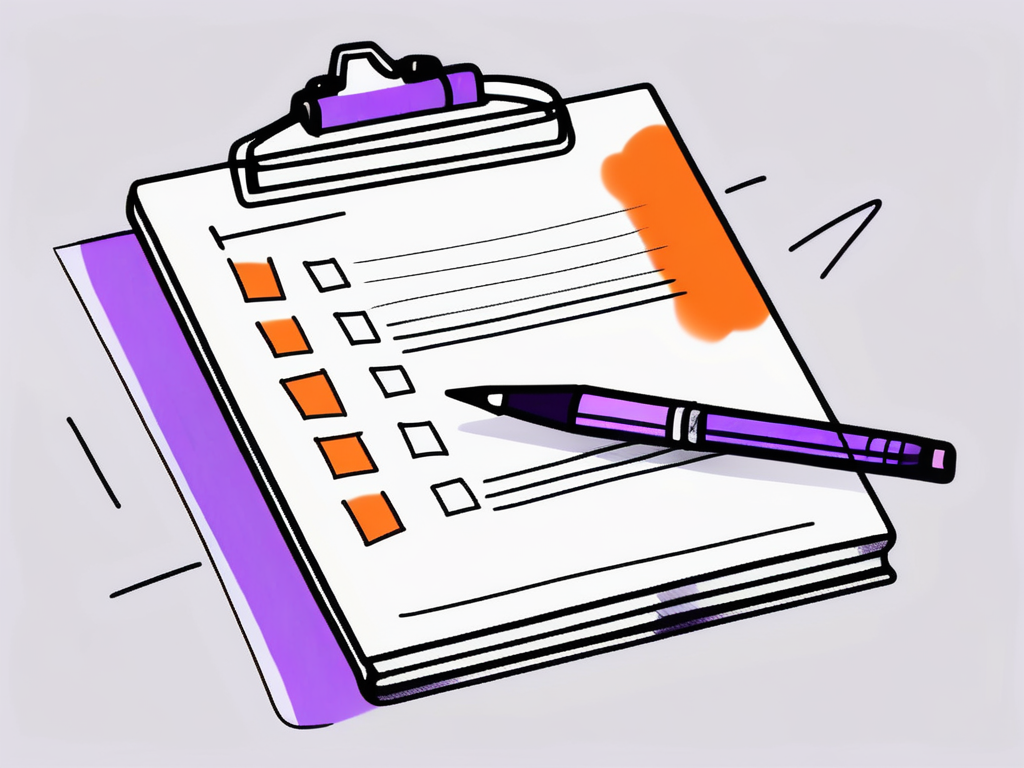Knowing how to write a Sales Rep Performance Improvement Plan is crucial for fostering a high-performing sales team and achieving business goals. A well-structured plan identifies areas of improvement and provides actionable steps and support to help sales reps reach their full potential.
By focusing on clear objectives, regular monitoring, and constructive feedback, businesses can enhance the effectiveness of their sales teams and drive better results
Table of Contents
ToggleCreating an Effective Sales Rep Performance Improvement Plan
Creating a Sales Rep Performance Improvement Plan (PIP) is vital for enhancing the effectiveness of your sales team and achieving business objectives. Here’s a step-by-step guide to crafting a robust and actionable PIP:
1. Identify Performance Gaps
Assess Current Performance:
- Review Metrics: Analyze sales data to identify areas where performance is lacking.
- Gather Feedback: Collect input from managers, peers, and customers to get a comprehensive view of the sales rep’s performance.
Set Clear Objectives:
- Define Expectations: Establish specific, measurable, achievable, relevant, and time-bound (SMART) goals.
- Focus on Key Areas: Target critical aspects like sales targets, customer interactions, and product knowledge.
2. Develop an Action Plan
Create Detailed Steps:
- Skill Development: Identify training needs and provide resources for improvement.
- Sales Techniques: Introduce effective sales strategies and methodologies.
Provide Support:
- Mentorship: Assign a mentor or coach to guide the sales rep.
- Resources: Ensure access to necessary tools and materials.
Set Milestones:
- Short-Term Goals: Break down the plan into manageable tasks with specific deadlines.
- Long-Term Vision: Outline the ultimate performance goals and expected outcomes.
3. Implement Regular Monitoring
Schedule Check-Ins:
- Weekly Meetings: Conduct regular check-ins to review progress and address any challenges.
- Progress Reports: Use performance tracking tools to monitor achievements against set targets.
Provide Feedback:
- Constructive Criticism: Offer actionable feedback that highlights both strengths and areas for improvement.
- Positive Reinforcement: Recognize and celebrate small wins to motivate continuous progress.
4. Adjust and Adapt
Evaluate Effectiveness:
- Performance Reviews: Conduct formal reviews at the end of the PIP period.
- Adjust Goals: Modify the action plan based on what has been achieved and what still needs improvement.
Continuous Improvement:
- Ongoing Training: Encourage continuous learning and development.
- Career Pathing: Discuss long-term career goals and development opportunities within the company.
5. Document the Process
Maintain Records:
- Written Plan: Document the PIP, including all goals, actions, and feedback.
- Progress Logs: Keep detailed records of meetings, feedback, and performance metrics.
Ensure Transparency:
- Clear Communication: Ensure the sales rep understands the plan and agrees with the objectives and steps.
- Collaborative Approach: Involve the sales rep in the planning process to ensure buy-in and commitment.
Understanding the Importance of a Performance Improvement Plan
Before delving into the intricacies of writing a PIP, let’s understand why it’s crucial for sales teams. A PIP serves as a roadmap for success, outlining specific steps to improve sales performance. It provides a structured approach to address concerns, set goals, and track progress.

The Role of a Performance Improvement Plan in Sales
In the world of sales, a PIP serves as a valuable tool to align individual performance with organizational objectives. It helps sales reps understand the expectations and areas where improvement is required. Moreover, a PIP allows sales managers to address performance issues objectively and foster a supportive environment for growth.
Effective Communication
One crucial aspect to consider when implementing a PIP is effective communication. Open and transparent dialogue ensures that both the sales rep and the sales manager are aligned. By fostering a culture of open communication, sales reps can express concerns, seek clarification, and actively participate in developing their PIP.
Ongoing Support and Training
Providing ongoing support and training to sales reps throughout the PIP process is essential. This includes:
- Coaching sessions
- Skill-building workshops
- Access to relevant resources
Investing in their professional development demonstrates the company’s commitment to the growth and success of its sales team.
Commitment and Collaboration
The success of a PIP relies heavily on the commitment and collaboration between the sales rep and the sales manager. Both parties must actively engage in the process, regularly reviewing progress and making necessary adjustments. Working together towards a common goal significantly increases the chances of achieving the desired improvement.
Setting Clear and Achievable Goals
One of the key components of a PIP is setting clear and achievable goals. Without well-defined goals, it would be challenging to measure success or track progress effectively. Let’s explore the importance of defining success in sales performance and creating SMART goals for sales reps.
Defining Success in Sales Performance
Success in sales is not limited to meeting targets alone. It encompasses various factors, including revenue growth, customer satisfaction, and sales skills development. When setting goals, consider a holistic approach that encompasses both quantitative and qualitative aspects of sales performance. By doing so, you ensure comprehensive improvement that benefits both the sales rep and the company as a whole.
For example, in addition to achieving revenue targets, success in sales performance could also involve enhancing the sales rep’s ability to build long-lasting relationships with clients. This could be measured through customer satisfaction surveys and feedback. By focusing on these additional aspects of success, sales reps can develop a well-rounded skill set that not only drives sales but also fosters customer loyalty and retention.
Creating SMART Goals for Sales Reps
Sales reps thrive when they have clear, actionable goals. SMART goals provide the framework for success by addressing the following aspects:
- Specific: Clearly define what needs to be accomplished. For example, “Increase quarterly revenue by 10%.”
- Measurable: Establish eesential metrics to track progress and determine whether the goal has been achieved. For instance, “Track the number of deals closed each month.”
- Achievable: Ensure the goals are realistic and attainable. Consider the sales rep’s capabilities, the market conditions, and available resources.
- Relevant: Align the goals with the sales rep’s role and overall organizational objectives. This ensures that the efforts contribute to the company’s success.
- Time-bound: Set a deadline for achieving the goal. Having a timeframe creates a sense of urgency and helps prioritize tasks effectively.
By following the SMART goal framework, sales reps can have a clear roadmap to success. However, it is essential to remember that goals should also be flexible and adaptable to changing circumstances. Sales is a dynamic field, and adjustments may need to be made along the way to ensure continued growth and success.
Moreover, it is crucial to provide ongoing support and feedback to sales reps as they work towards their goals. Regular check-ins, coaching sessions, and training opportunities can help them stay motivated and on track. By fostering a culture of continuous improvement and learning, sales teams can achieve exceptional results and exceed expectations.
Identifying Areas of Improvement

When delving into the evaluation process, it’s crucial to consider not only the quantitative data but also the qualitative aspects that contribute to sales performance. Beyond just numbers, factors such as customer satisfaction levels, market trends, and competitor analysis play a significant role in shaping the sales landscape. By incorporating these diverse elements into the evaluation framework, a more holistic view of the current performance can be obtained.
Evaluating Current Sales Performance
Objective evaluation is the first step in identifying areas for improvement. Analyze sales data, review performance evaluations, and gather feedback from customers and team members. This comprehensive assessment will reveal patterns, areas for enhancement, and potential bottlenecks hindering performance.
Leveraging Technology and Data Analytics
Utilizing technology and data analytics tools can provide deeper insights into sales performance. Advanced analytics help uncover hidden patterns, forecast future trends, and identify untapped opportunities for growth.
Data-Driven Approach
A data-driven approach enhances the accuracy of the evaluation process and provides actionable insights for strategic decision-making. This method ensures that decisions are based on concrete data, leading to more effective and targeted improvements. Here are some key benefits of using data analytics:
- Increased Accuracy: Analyzing data helps eliminate guesswork, providing precise insights.
- Trend Identification: Recognizing sales patterns and predicting future trends.
- Opportunity Spotting: Identifying untapped markets and potential growth areas.
- Performance Benchmarking: Comparing individual and team performance against set benchmarks.
Pinpointing Weaknesses and Opportunities for Growth
Once you have a clear understanding of the current sales performance, it’s time to pinpoint weaknesses and opportunities for growth. This can be done through self-reflection, open communication with the sales rep, and collaborative discussions to identify areas where additional training, skill development, or process refinement is required.
Furthermore, fostering a culture of continuous improvement within the sales team is essential for long-term success. Encouraging feedback, promoting knowledge sharing, and incentivizing innovation can create a dynamic environment where individuals are motivated to strive for excellence and adapt to changing market dynamics.
By nurturing a growth mindset and embracing a learning culture, organizations can proactively address weaknesses and capitalize on opportunities for sustainable growth. This approach ensures that you get the whole process in shape, paving the way for a resilient and high-performing sales team.
Monitoring Progress and Providing Feedback

When it comes to monitoring progress and providing feedback in a Performance Improvement Plan (PIP), it’s crucial to understand that these elements are not just administrative tasks but integral components of fostering growth and development within your sales team. Regular check-ins serve as touchpoints where sales managers can delve into the specifics of a sales rep’s performance, identify areas for improvement, and offer tailored support to enhance their skills and capabilities.
The Importance of Regular Check-ins
Regular check-ins serve multiple purposes in the context of a PIP. They enable sales managers to:
- Track progress
- Provide guidance
- Ensure the sales rep has the necessary support
Furthermore, check-ins foster open communication, build trust, and create a sense of accountability.
Moreover, beyond the surface level of progress tracking, these check-ins present an opportunity to cultivate a mentorship dynamic between the sales manager and the sales rep. By engaging in meaningful conversations, setting achievable goals, and offering personalized guidance, check-ins can become a platform for mutual learning and professional development.
Constructive Feedback and Recognition in Sales Performance
Feedback plays a vital role in driving improvement. Provide timely, specific, and actionable feedback that:
- Highlights areas of improvement
- Acknowledges achievements
- Provides guidance for further development
Additionally, recognize and celebrate milestones and successes along the improvement journey to boost morale and motivation.
Within the realm of sales performance improvement, feedback should not be viewed solely as a tool for pointing out flaws but as a mechanism for nurturing talent and fostering a culture of continuous improvement.
Implementing Your PIP for Lasting Success
By implementing a well-structured Sales Rep Performance Improvement Plan, you can significantly enhance the effectiveness of your sales team and drive better business results. Focus on clear objectives, regular monitoring, and constructive feedback to ensure continuous growth and development.
With a proactive approach and commitment to improvement, your sales team can achieve their full potential and contribute to the overall success of your organization.

![How Comedian Ellen Skrmetti Reclaimed Her Time with Fulfyld’s Local Fulfillment Solution [Case Study]](https://img.fulfyld.com/cdn-cgi/imagedelivery/LhwpGZtkAL7sOMr5mtwT5A/www.fulfyld.com/2025/04/unnamed-5.png/w=150,h=150,fit=crop)
![How Nicole’s Best Gluten Free Flour Found Their Perfect Fulfillment Match with Fulfyld [Case Study]](https://img.fulfyld.com/cdn-cgi/imagedelivery/LhwpGZtkAL7sOMr5mtwT5A/www.fulfyld.com/2025/04/unnamed-4.png/w=150,h=150,fit=crop)
![How Sonia Roselli Beauty Maintained Premium Standards Through Long-Term Partnership with Fulfyld [Case Study]](https://img.fulfyld.com/cdn-cgi/imagedelivery/LhwpGZtkAL7sOMr5mtwT5A/www.fulfyld.com/2025/04/unnamed-3.png/w=150,h=150,fit=crop)
![How Daily Grind Planner Transformed Their Customer Experience by Partnering with Fulfyld [Case Study]](https://img.fulfyld.com/cdn-cgi/imagedelivery/LhwpGZtkAL7sOMr5mtwT5A/www.fulfyld.com/2025/04/unnamed-2.png/w=150,h=150,fit=crop)
![How Pine Company Wearables Reclaimed Their Time by Outsourcing Fulfillment to Fulfyld [Case Study]](https://img.fulfyld.com/cdn-cgi/imagedelivery/LhwpGZtkAL7sOMr5mtwT5A/www.fulfyld.com/2025/04/unnamed-1.png/w=150,h=150,fit=crop)
